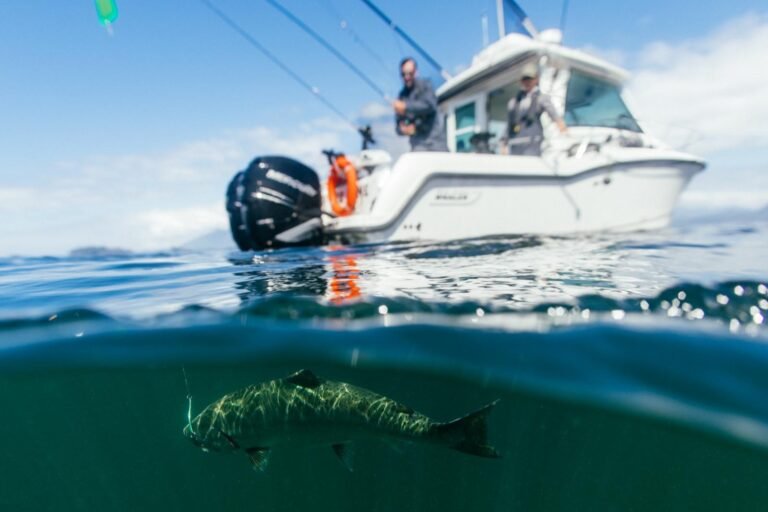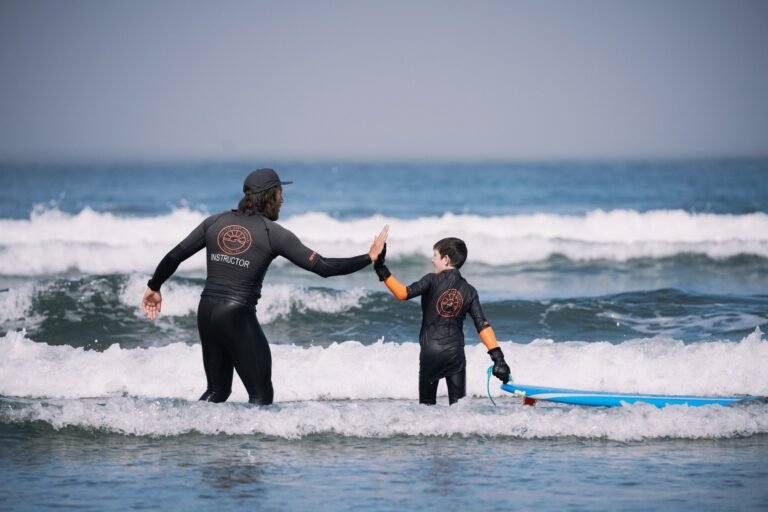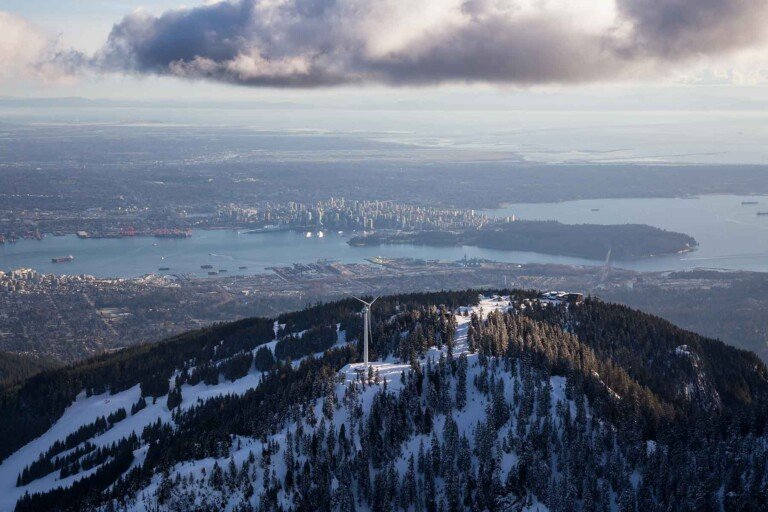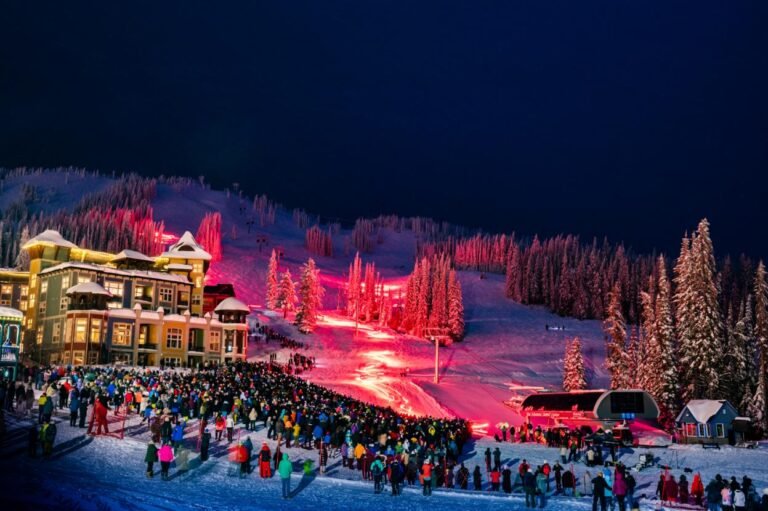Premier Listings: Boating, Sailing & Cruising: Vancouver, Coast & Mtns
Boating, Sailing & Cruising in the Fraser Valley
The Information provided here describes boating opportunities in the Fraser Valley. Some of the information is exclusively for canoes and kayaks, but most venues can be enjoyed by both boaters and paddlers.
North Fraser Valley
Over the past decade, an increasingly large amount of land has been opened to the public as park in the region around Pitt Lake, at the northwestern corner of the Fraser Valley. Today, Grant Narrows, Widgeon Marsh, and Minnekhada Regional Parks straddle both sides of the Pitt River as it carries water from the intertidal lake to the nearby Fraser River. All of this abundantly rich land is the traditional territory of the Katzie people. The four reserves that they now occupy include one at the outlet of Pitt Lake adjacent to Grant Narrows. The recently created Pinecone Burke Provincial Park borders the reserve and encompasses much of the western side of the lake, while Golden Ears Provincial Park‘s boundary is the eastern shore.
It’s easy to see why the Katzie have always spent most of their time around the south end of the lake. In times gone by, sturgeon, salmon, and eulachon flourished in the river, while berries and wapato (a potato-like tuber) grew in the sloughs where ducks, geese, and sandhill cranes foraged. The abundance was staggering. Occasionally, a Katzie hunting party would venture up the east side of the lake in search of mountain goats. Only in summer do the surefooted animals descend the steep slopes of the fjord in search of drinking water. Ancient pictographs still visible on the sheer rock face above the southwest side of the lake detail such hunting scenes. Although you’d have to make like a goat to reach them, the red ochre shapes are clearly visible from the lakeshore.
Several superb locations await paddlers searching for freshwater adventure and wildlife in this region. From May to September there are canoes for rent at both Grant Narrows and Alouette Lake, so you don’t need your own boat to share in the experience. Grant Narrows Regional Park, at the south end of Pitt Lake, is the starting point for river exploration of a large, intertidal marsh that includes nearby Widgeon Creek. In Pitt Meadows, turn north off Hwy 7 at the Harris Road stoplights east of the Pitt River Bridge where a large sign points to Pitt Lake. Harris Road meanders north, then east. Turn north again at Neeves Road. Once across a narrow bridge over the Alouette River, the road becomes rougher and its name changes from Neeves to Rennie. Deep ditches line each side of the road as mountains begin to rise before you. You are now in Pitt Polder, travelling beside the broad Pitt River north towards Pitt Lake. Grant Narrows Park lies at the end of the road. Although Grant Narrows is a pocket-sized park, it serves as the gateway to several adjacent wilderness areas, such as the Pitt-Addington Marsh Wildlife Management Area. By far the most popular feature in the park is the boat launch. There is a charge for trailer-mounted boats; car-top boats launch for free. The Greater Vancouver Regional District has set aside a large area of the marsh at the mouth of Widgeon Creek, where it flows into the Pitt River, as a wildlife reserve. The GVRD offers seasonal nature programs that involve paddling in the Widgeon Marsh Reserve.
Widgeon Creek is the destination of choice for most paddlers who sprint across Grant Narrows to reach its protected backwater. The distance isn’t great, and it should take only 10 minutes of hard paddling to cross the open water. Strong winds spring up on nearby Pitt Lake in the afternoon and can kick up whitecaps that will intimidate novice paddlers. (Note: Paddling on Pitt Lake is not recommended because of the winds. Even experienced powerboaters on the lake treat it with respect.) A safe approach is to launch as early in the day as possible. In fact, to get the most out of your visit here, explore near sunrise or sunset when wildlife is most active and the scenery divine.
Widgeon Creek is helpfully marked by a wooden signpost that rises up above the water of the marsh. Follow upstream, bearing to the left early on where another signpost points towards the Forest Service recreation site located an hour’s paddle northwest of Grant Narrows. (If you follow the branch to the right, you enter a series of secluded backwaters perfectly suited for wildlife observation and fishing.) Late in the summer, when water levels are at their seasonal lows, you may have to hop out to float your canoe across a sandbar or two. Wear a pair of old running shoes that you can slip into and out of easily. The shoes will also come in handy when launching from Grant Narrows’ muddy shore.
You don’t have to venture far upstream before you find the first of many fine sandy areas, suitable for sunning and picnicking. Tall cottonwood, hemlock, and solitary Sitka spruce shade the shore as Widgeon lazily winds its way into the folds of the nearby mountains. A silence envelops you. The Forest Service recreation site features a rough canoe pullout beside a broad, grassy field, where both an old road and a trail begin. Follow either to reach Widgeon Falls. (The old road is a holdover from the days when miners followed this route north into the upper Pitt River valley. Today, it serves as the southern terminus of a lengthy 8-day hiking trail through Pinecone-Burke Provincial Park.) The hiking trail to Widgeon Falls (2.5 miles/4 km return) is a winding affair, with several steep staircases. The road leads gently uphill to the falls and covers approximately the same distance as the trail, but for the most scenic approach, take the trail as it follows emerald-hued Widgeon Creek for half of the journey. Widgeon Falls tumbles over and through a series of smooth granite boulders. When water levels drop, it’s possible to walk out on the rock shelf beside the creek for a better look. On sunny days you may even find a small pool for a quick dip. The best feature of the falls is the relentless, roaring white noise it emits, a powerful sound that clears and cleanses the mind.
Rather than follow the crowd to Widgeon Creek, take advantage of the log booms that line the Pitt River and float south along its banks. The booms help cut the wake of passing motorboats. Osprey nest on the tops of the mooring posts. In these quiet waters you’ll have the best chance of observing them, as well as herons, swans, and perhaps even exotic sandhill cranes, whose nesting ground lies nearby in the polder. (Polders are low-lying sections of land near rivers and oceans, dried by using a technique perfected in Holland.) Cross over to explore the backwaters along the western side of Siwash Island, which conceals the true riverbank at the foot of Mount Burke. The channel between the two is shallow. In summer, the wild smell of marsh marigolds in bloom perfumes the air.
If you’re fortunate enough to get a ride up Pitt Lake on a powerboat that also has room to carry or tow your canoe or kayak, June is the best time to spend a few hours exploring the intertidal waterways of Red Slough at the north end of Pitt Lake. That’s when water from freshets, combined with semi-annual high tides, makes navigation easiest. Broad arms of the slough invite paddlers back into the folds of the mountains. Lurid yellow lichen cling to the glistening, black granite walls, creating an effect as striking as an abstract expressionist painting.
Kanaka Creek Regional Park in Maple Ridge is a long corridor of protected land that stretches almost 7 miles (11 km) inland from the Fraser River. To explore the park by canoe or kayak, head for the car-top boat launch in a section of the park located near Kanaka and the Fraser’s confluence. TakeHwy 7 (Lougheed Hwy) a short distance east of Maple Ridge. Just after the highway crosses the Kanaka Creek Bridge, a green GVRD sign indicates the way to Kanaka Creek Regional Park’s Riverfront entrance. Turn south onto River Road, cross the railway tracks, and drive to the west end of the parking lot. The boat launch is located a short distance from here. You can spend an idyllic 30 minutes paddling a mile or so upstream to a fish counting station beside the 240th Street Bridge (only open from October through mid-December). Shallow water north of here choked with blowdowns makes paddling more difficult – better to float back downstream through Kanaka’s oxbow bends with your binoculars at the ready. Lazily explore the last few bends made by Kanaka between the boat launch and the Fraser. The atmosphere in this section is one of protective solitude, with only a hint ofa breeze. Tall stands of evergreens and cottonwoods shade much of the creek. From their branches, hawks eye the herons who have flown across from their colony in Derby Reach Regional Park. Thick stands of green vegetation are so perfectly mirrored in the creek’s languid surface that at times it is difficult to tell where the true growth leaves off and the reflection begins. In places along the creek, mauve, helmet-shaped penstemon flowers tower above the shoreline.
Golden Ears Provincial Park’s Alouette Lake provides a big-lake paddling experience. Head for the day-use area where a drive-in boat launch is nestled beside the picnic area. Canoe and kayak rentals are available at lakeside from June to September. The best time to explore the length of the 10-mile (16-km) lake is early or late in the day. Strong winds often arise at midday, which make paddling a tough proposition. As Alouette is a flooded lake (there’s an unobtrusive earthen dam at its south end), the forest descends to the waterline. You’ll find only a few good landing spots in case of trouble; the lake’s east side is particularly rough.
If you wish to explore the less-visited northern half of Alouette Lake, you can save yourself an hour or more of paddling time by portaging your canoe or kayak from the Gold Creek parking lot to North Beach. A service road leads from the parking lot to a dock at the beach, a 15-minute hike. As you approach Moyer Creek two prominent features stand out on the skyline, Mounts Nutt and Gatey. You’ll find much to admire as you paddle north towards wilderness campsites at Moyer Creek, a two-hour, 2.5-mile (4-km) paddle one way. In summer, several small beaches stand revealed on the lake’s west side, perfect places to pause for a break in the paddling while you enjoy a dip.
If you’re planning a visit to modest-sized Rolley Lake Provincial Park, you can launch a small boat or inflatable raft from the beach. Powerboats are not allowed on Rolley Lake and tranquillity prevails here. Bring binoculars for wildlife viewing, and perhaps a fishing rod. A companion site to the BC Hydro recreation site at Buntzen Lake is located at the dam that separates Stave Lake and Hayward Lake near Mission. As at Buntzen Lake, only hand-powered boats or boats with electric motors are permitted on Hayward Lake. Larger, more powerful boats should launch on Stave Lake at a site 0.6 mile (1 km) north of the North Beach turnoff. The boat launch for Hayward Lake is just beside the North Beach parking lot and has its own driveway down to the lake. Although a paddle on the lake can be enjoyable, there are almost no places along the shoreline to find shelter should you encounter strong winds.
East of Mission’s Hatzic Lake, where you can launch a car-top boat at Neilson Regional Park, the Lougheed Hwy runs through the small town of Dewdney and then crosses a bridge onto Nicomen Island. Just before the bridge, River Road leads off to the right and follows the shoreline of Nicomen Slough past a pub and a number of wharves to Dewdney Nature Park, where there’s a vehicle boat launch. The Fraser River flows past just beyond sight, a short distance south of the boat launch. This is a languid section of the river where a series of sloughs forms backwaters away from the river’s main course. Strawberry Island lies at the east end of Nicomen Slough. (In the 1930s, strawberries were a major cash crop in the Hatzic area.) This is one of the quietest backwaters between here and the eastern end of the Fraser Valley.
Kilby Provincial Park is located east of Mission, a short distance off Hwy 7 on wide-mouthed Harrison Bay. There is a paved boat launch here, particularly popular with water-skiers.
Weaver Creek and nearby Morris Creek are excellent locations to explore when paddling the Harrison River as it flows from Harrison Hot Springs to Harrison Bay, about 12 miles (18 km) in total. You can do it point-to-point if you have two vehicles. Leave one at the boat launch at Kilby Provincial Park on Harrison Bay and another beside the public boat launch at the west end of the municipal beach in Harrison Hot Springs. Paddling is one of the best ways to see the languid side of the Harrison system. Wildlife lingers here – why shouldn’t you?
Harrison Hot Springs, the source of the rugged Chehalis River, is cupped in the round folds of the mountains west of Harrison Lake. Although not nearly as large as Harrison, it is surrounded by many smaller lakes beside which you’ll often find a modest Forest Service recreation site with a picnic table or two. The Forest Service sites on Chehalis Lake, complete with their own vehicle boat launches, are far grander than most others in the Fraser Valley. Unfortunately, the steepness of the hillside surrounding the lake makes reaching these sites a challenge. Chehalis Lake is typical of the long, narrow trenches scoured out by glaciers, work that these icy tongues still carry on nearby at higher elevations. Hemmed in by mountains on both sides, the scenery here is not as dramatic as elsewhere in the Coast Mountains. Only snowcapped Mount Fletcher really impresses. Its peak is best viewed from the middle of the lake, one good reason for paddling here. Another is the clear, deep, pale-green colour of the water. The southern half of the lake is prettiest as it has not been as affected by logging. Chehalis is perfectly suited to canoeing because it is not as prone to strong winds as other North Fraser Valley lakes such as Alouette or nearby Harrison. A dozen small creeks flow or fall into the lake and chill its waters.
Boat-launch ramps are located at the Chehalis Lake South and Skwellepil Creek Forest Service campsites. To reach these sites, watch for the Sasquatch Inn on Hwy 7, just north of the Harrison River Bridge. This is where you begin the 20-mile (32-km) journey to Chehalis Lake via paved and gravel roads. Two roads branch north here, one on each side of the inn. They both link up at an intersection behind the inn and continue as the Morris Valley Road. A short distance farther, the Chehalis Valley Forest Road branches north and leads to Chehalis Lake. A second approach to the lake is via the Fleetwood Forest Road that begins on the east side of the Chehalis River Bridge. A medium-sized Forest Service recreation site is located on the east side of the bridge. (If you follow paved Morris Valley Road farther east it divides: one branch leads east to Weaver Creek and the other north to Hemlock Valley. Both Chehalis Valley and Fleetwood Forest Roads are gravelled roads that serve as active logging routes. Watch for information signs posted regarding their use. Drive with your headlights on and exercise extreme caution, especially on weekdays. The two roads merge near marker 13. There is a Forest Service site with vehicle boat launch at the south end of the lake. The approach to both this site and the one at Skwellepil Creek is rough and steep. It’s often best if someone gets out to check road conditions before attempting a descent. The first views of the lake occur at marker 15.
In spring and early summer, when water levels are at their annual high, there’s challenging river kayaking and rafting on both the Chehalis River and Chilliwack River. The Chilliwack and the Chehalis are both geologically young rivers, prone to changing their course from one spring runoff to the next. Be as mindful of sweepers as of boulder gardens.
The Chehalis River flows south from Chehalis Lake into the Harrison River. Whitewater adventurers seek out the Chehalis in May and June when water levels are high. Experienced paddlers put their canoes and kayaks in at an obscure point just above the river’s confluence with Statlu Creek near marker 14. The presence of vehicles beside the road is a tip-off. Unfortunately, the Chehalis’s red-rock canyon, waterfalls, and caves are hidden from sight by dense stands of scrub forest. You must run the river to view them. For information on guided rafting and kayak trips on the Chehalis, contact the Mission Visitor Centre.
Sasquatch Provincial Park near Harrison Hot Springs touches on four lakes, two of which – Deer and Hicks – are well suited to exploring in small boats. (Electric motors only on Deer Lake’s diminutive surface, and 10hp is the maximum permitted on Hicks.) There are boat launches at both Deer and Hicks. Paddle to isolated Sandy Beach at Hick’s south end, well worth the journey. It’s always less crowded than the beach beside the campground. Two small islands also lie offshore in Hicks Lake and make for easygoing exploring.
South Fraser Valley
The Chilliwack River is better known than the Chehalis, which lies almost due north on the opposite side of the valley. A challenging section of the Chilliwack is used as a race course and training site for Canada’s national kayak team. Watch for the metal flags strung above the river east of the Vedder Crossing Bridge that outline the kayak slalom course. In total, there are almost 22 miles (33 km) of the Chilliwack to run. Conditions on the river are more demanding in some sections than others. Only advanced kayakers should attempt to paddle the entire length when the river is at full flow. For paddlers in search of an intermediate-level outing, try the section between the Chilliwack River salmon and steelhead fish hatchery and the Vedder Bridge, a distance of about 12 miles (20 km).
To reach the Chilliwack River, take exit 104 from Hwy 1 in Chilliwack towards the Chilliwack Lake Provincial Park at Cultus Lake Provincial Park. Once you’ve made the exit you are on No. 3 Road. South of Yarrow is the small river settlement of Vedder Crossing. Turn east here on the Chilliwack Lake Road. Numerous Forest Service recreation sites are sprinkled beside the Chilliwack River and afford launch and rest areas.
Cultus Lake is a popular location for waterskiing and jet-boating, but one of the most enjoyable ways to visit here is in the tranquillity provided by a canoe or kayak. You don’t have to paddle far out from the undulating shoreline to get a good look at International Ridge, which rises above the east side of the lake. In fall, the ridge blazes with colour. Both Jade Bay and Maple Bay in nearby Cultus Lake Provincial Park have a boat launch.
Premier Listings

Biographical Info
Chromer Sport Fishing is the trusted source for the best BC fishing trips out there! We are a licensed guiding operation located in Vancouver, BC and a full-service booking agency for all the top freshwater and saltwater fishing adventures in BC.
We offer salmon fishing charters, Vancouver fly fishing trips, and BC sturgeon fishing adventures, all right from Vancouver. We also offer steelhead fishing trips in Northern BC, winter steelhead fishing on Vancouver Island, and saltwater salmon fishing out of a lodge on Langara Island in Haida Gwaii.
Owner Operator Yos Gladstone has been a salmon and steelhead guide since 1998, spending over 200 days a year guiding and fishing in BC. He started Chromer with one mission in mind: to showcase fishing in BC and offer the kind of trips he’d like to go on. Chromer Sport Fishing looks forward to earning your business and being a part of your next fishing adventure in British Columbia.






